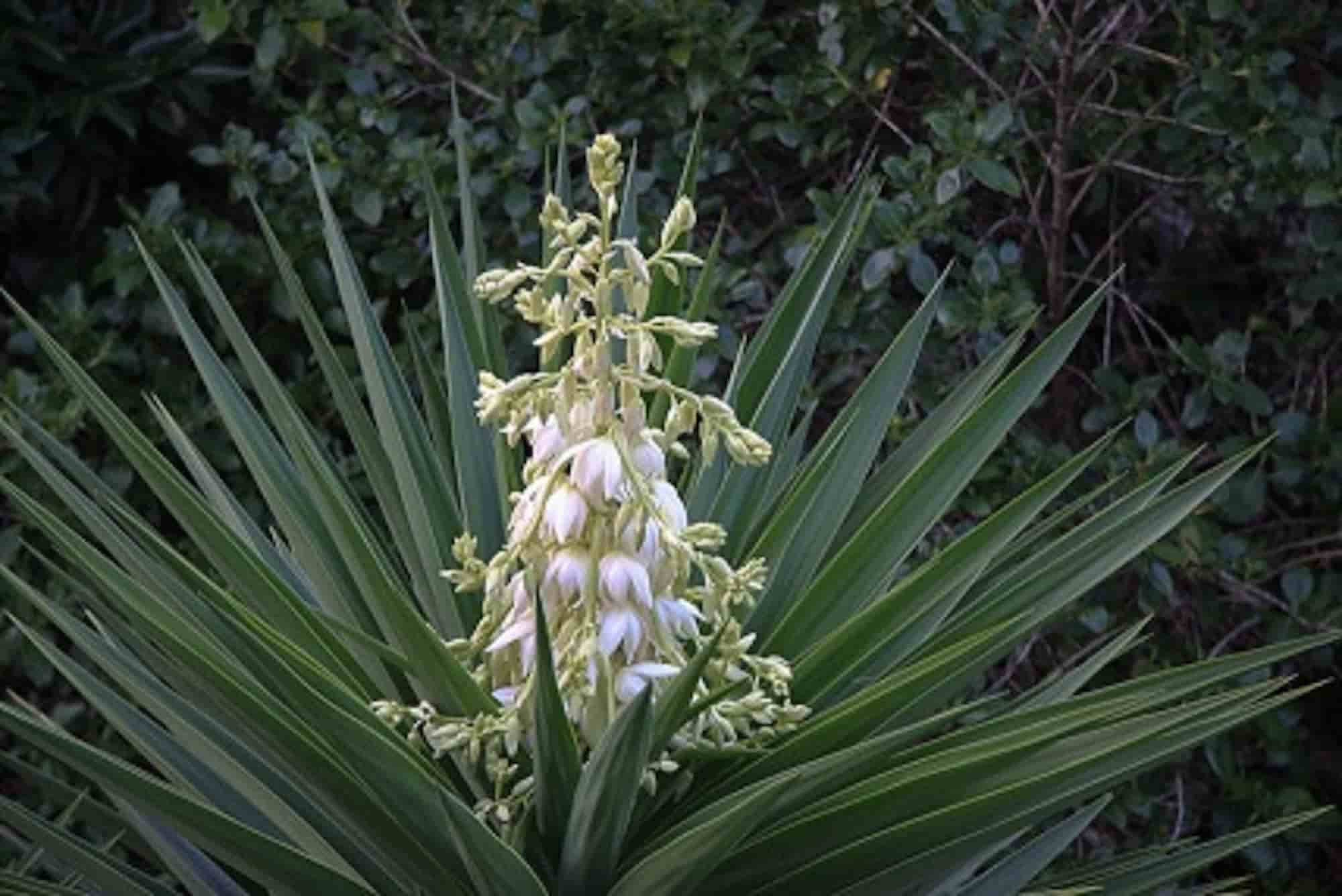
Choosing a yucca
Buying guide to make the right choice
Contents
Fancy something exotic in your borders or on your terrace? With its architectural silhouette and impressive flowering in long spikes of white flowers, the outdoor yucca is the plant for you. Because yucca, with around fifty species, is not confined to our flats and adapts perfectly to gardens in temperate climate. Native to arid regions that are nevertheless cold in winter in North and Central America, yucca loves the sun and even drought while proving hardy, as with Yucca gloriosa which withstands temperatures down to −20°C. Perennial plant related to agaves, with spear-shaped leaves often sharp-pointed at their tips, outdoor yucca only needs dry, perfectly drained soil. We recommend choosing your outdoor yucca based on various criteria related to appearance, hardiness, size and intended use. Wherever you live, outdoor yucca can adorn your garden or your terrace.
By foliage colour
Yucca for outdoor use is remarkable for the beauty of its evergreen foliage. Its upright, stiff, linear leaves give it a highly ornamental aspect that makes a statement in a border, rockery or even in a pot. This foliage differs in shape depending on variety but also in colour, ranging from tender green to metallic blue. Some varieties offer variegated foliage, margined with different, more or less pale shades.
Outdoor yuccas with variegated foliage
Varieties of outdoor yuccas with variegated foliage are the most widespread. The rigid and often leathery foliage is generally margined with long stripes in various shades and gives an undeniable exotic charm to this perennial plant.

- Yucca gloriosa often bears sword-shaped, rather bluish leaves that can be variegated. Topped by a thorn, the leaves can take on coloured zebra-like streaks. Thus, Yucca gloriosa ‘Variegata’ displays a magnificent blue-green foliage margined with yellow. As for Yucca gloriosa ‘Citrus twist®’, it is striking with its rosette of pale green leaves edged with light yellow. With cold or drought, the yellow will evolve from ivory to an almost reddish-pink as the leaves age.
- Yucca recurvifolia ‘Bright Star’ will appeal to lovers of very colourful outdoor yuccas. Its leaves are margined with different colours centred on yellow. It too turns pink in cold or in intense heat.
- Yucca filamentosa is recognised by its dark green variegated leaves, extended with white filaments that give it its common name filamentous yucca. The Yucca filamentosa ‘Bright Edge’ stands out with leaves margined in yellow and bordered by white filaments, the leaves of Yucca filamentosa ‘Colour Guard’ show green foliage marked by a yellow stripe, while the blue-green leaves of Yucca filamentosa ‘Ivory Tower’ are adorned with cream to pure-white.
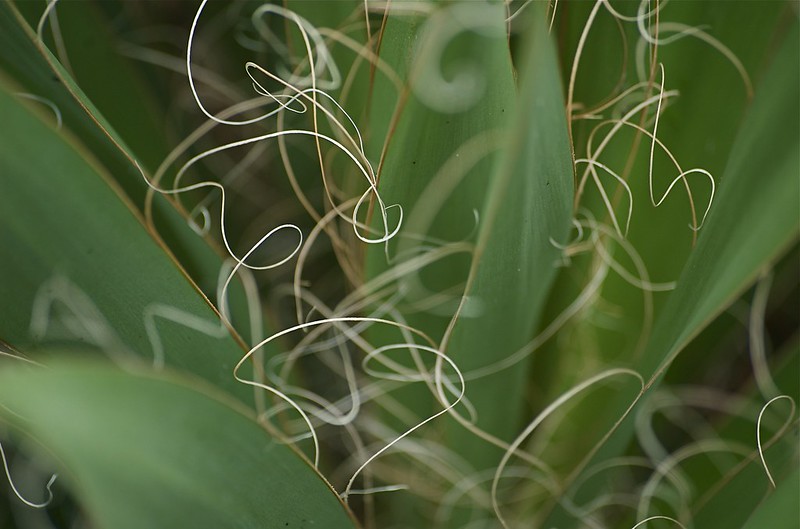
Yucca filamentosa is recognised by the filaments on the edge of the leaves
- Yucca flaccida ‘Golden Sword’ is characterised by long yellow leaves margined with blue-green.
Outdoor yuccas with solid-coloured foliage
Although less colourful, yuccas with solid-coloured foliage are just as interesting.
- Yucca aloifolia with aloe-like leaves impresses with its broad ribbon-shaped, rather dark green leaves that end in a sharp point.
- Yucca rostrata is unmistakable thanks to its dense clump of narrow blue-green leaves, which makes a wonderful feature in a very contemporary garden.
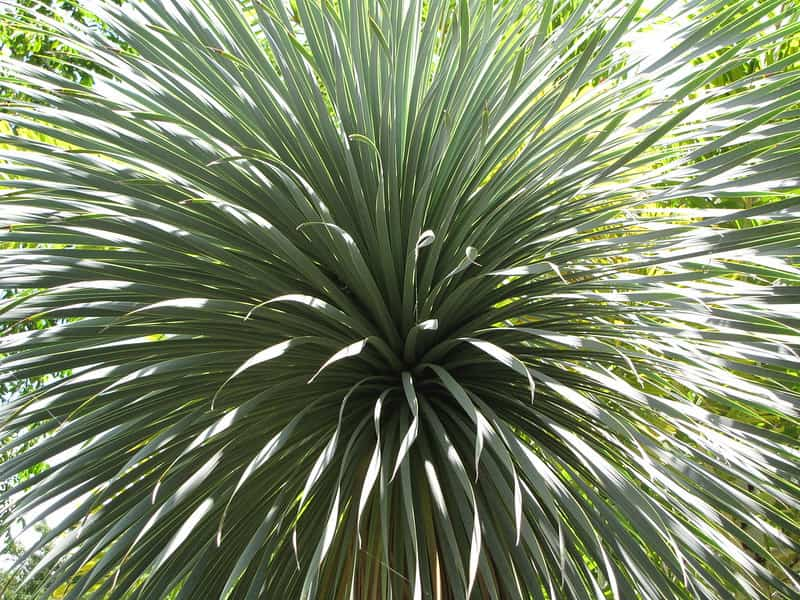
Fine blue-green leaves of Yucca rostrata
- Yucca rigida, also called blue yucca, lives up to its name: it closely resembles Yucca rostrata in silhouette but is distinguished by its longer, narrower leaves of a striking blue hue.
Depending on flowering period
An outstanding feature of outdoor yucca is its flowering, which is highly decorative and imposing. Indeed, these exotic perennial plants produce long stalks bearing dozens of small, bell-shaped flowers, white or cream. Flowering can occur at different times of year. Note that flowering can sometimes extend into October in the most southerly regions.
Flowering from May to July
Some yuccas flower earlier than others. Thus, Yucca aloifolia becomes covered, after three or four years’ cultivation, with beautiful panicles of white flowers flecked with pink, 50–80 cm tall. Flowers of Yucca gloriosa are white and fragrant while those of Yucca rostrata, with a slightly waxy texture, are edible. Yucca rigida produces only a single pale bluish-white flower.
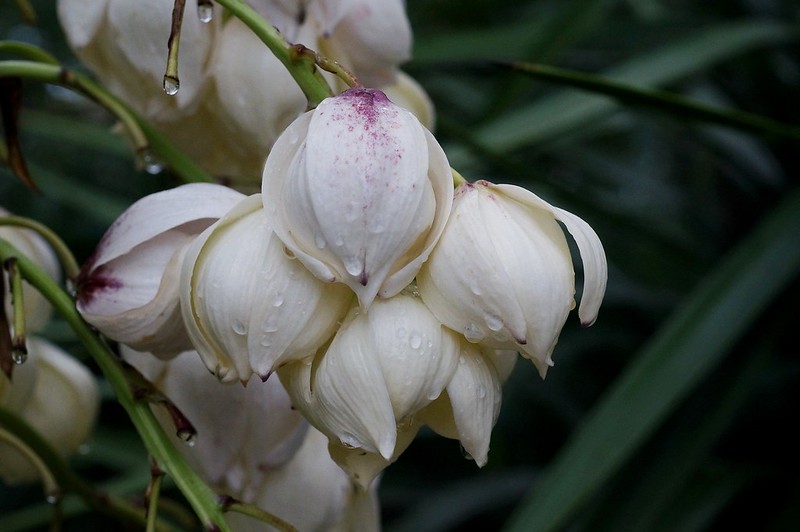
Yucca Aloifolia displays white flowers flecked with pink
Flowering from June to August
Most outdoor yuccas flower in mid-summer and vary in size and colour. The small Yucca recurvifolia ‘Bright Star’ forms stalks of cream-white bell-shaped flowers; Yucca filamentosa tends to be ivory-white and can reach up to 2 metres, as can Yucca flaccida ‘Golden Sword’.
Discover other Yucca
View all →Available in 1 sizes
Available in 3 sizes
Available in 1 sizes
Available in 2 sizes
Available in 1 sizes
Available in 2 sizes
Available in 1 sizes
Available in 1 sizes
Available in 1 sizes
Available in 1 sizes
Depending on its hardiness
As surprising as it may seem, beneath its fragile, exotic appearance, the outdoor yucca adapts to the rigour of our winters. In Central and North America it sometimes grows at high altitudes, under the snow. If given perfectly drained soil and a sunny position, outdoor yucca will withstand low temperatures. Bear in mind, however, that yucca hates damp above all.
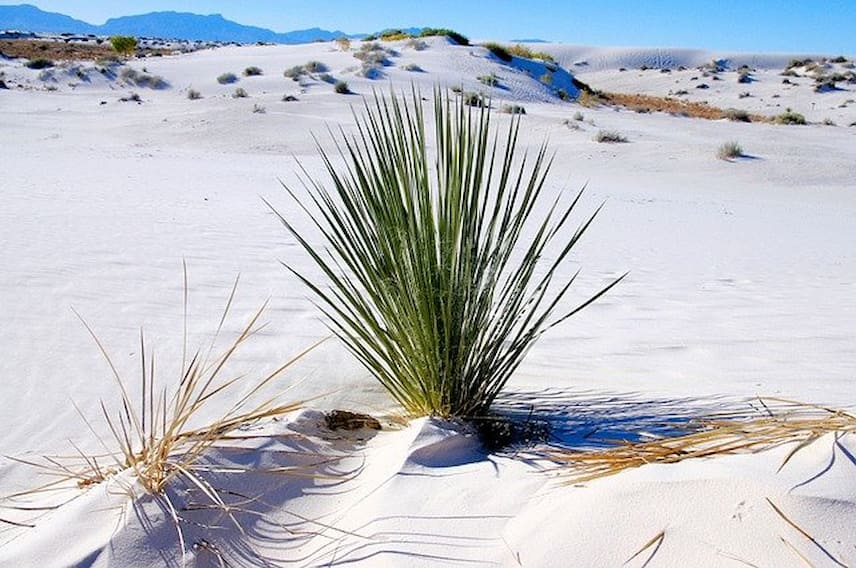
Hardiest yuccas
Undoubtedly, the hardiest outdoor yucca varieties are gloriosa and filamentosa. With a very sunny position and well-drained soil — even stony, sandy or very poor — Yuccas gloriosa and filamentosa can tolerate temperatures down to −20 °C. To further improve hardiness, don’t hesitate to mulch the base. Yucca recurvifolia ‘Bright Star’ can also, in dry soil, endure temperatures of around −18 to −20 °C. It is even accustomed to snow! As for Yucca flaccida ‘Golden Sword’, it is not troubled by the lowest temperatures. Only overly wet springs harm it.
Most tender varieties
Under optimal growing conditions in terms of position and drainage, some yucca varieties can withstand temperatures around −15 °C. Yucca rostrata can thus acclimatise in many climate zones, as can Yucca rigida, which should be given a very sunny spot. Waterlogged soils in winter are fatal to it. As for Yucca aloifolia, it is the least hardy of all, only down to −12 °C.
According to their pruning and shape
Rhizomatous plant, outdoor yucca generally appears in the form of a dense tuft of leaves held upright, sword-shaped, sometimes recurved. This tuft of lanceolate leaves clusters around one to three trunks, more or less thick depending on the variety. Some species described as stemless do not have a trunk.
Species with or without a trunk
Most yuccas have a trunk, even two or three as they age. Over the years, these trunked yuccas take the form of small upright trees that become ramified. Others are distinguished by absence of trunk, giving them a different, more compact silhouette. Thus, filamentosa is one of the best-known yuccas and can act as groundcover, planted on a slope, in a rockery or in a border. It is indeed devoid of trunk and produces numerous suckers. Yucca flaccida is also a stemless yucca whose leaves develop around one or several leafy rosettes.
Pruning and spread vary depending on species
Yuccas can have very different development depending on their variety. Their pruning and spread will vary from one specimen to another but yuccas always make a striking feature in a rockery or in a border with an exotic or contemporary feel.
Large-development yuccas make a wonderful solitary specimen in the centre of a large bed. Thus, Yucca rigida attracts attention thanks to the blue colour of its foliage but also because of its stature, which can reach 3 m. As for Yucca rostrata, it is just as imposing with its thick trunk, which can measure up to 3 to 4 m in height. Particularly graceful with its tufts of bristly leaves, rostrata thrives on dry slopes.
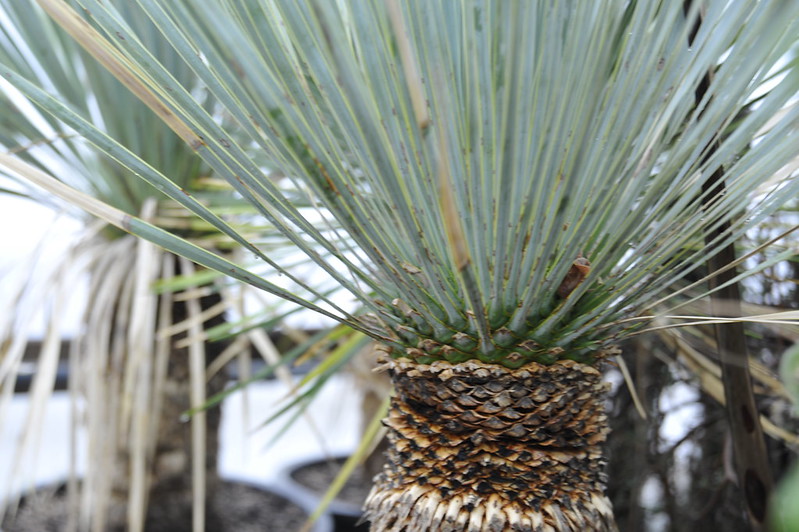
Trunk of Yucca Rostrata can reach 3 to 4 m in height
Yucca aloifolia can also reach a pruning and spread of 3 m. And quite rapidly, because its growth is faster than that of its congeners.
Conversely, other yuccas are characterised by their miniature aspect. Yucca recurvifolia never exceeds 60 cm and filamentosa ‘Ivory Tower’ 70 cm. More compact, they find their place as solitary plants in a border or combined with other plants having the same cultural requirements.
Depending on their use
Overall, all yuccas do as well in ground as in pots if and only if substrate is well drained. Aesthetically speaking, Yucca rostrata, which forms a dense ball when young, will be ideal in a large pot. Similarly, most tender species, such as Yucca rigida and other yuccas, can be grown in pots and brought indoors in case of very severe cold.
For more information, do not hesitate to consult our dossier devoted to our different yucca varieties .
- Subscribe!
- Contents
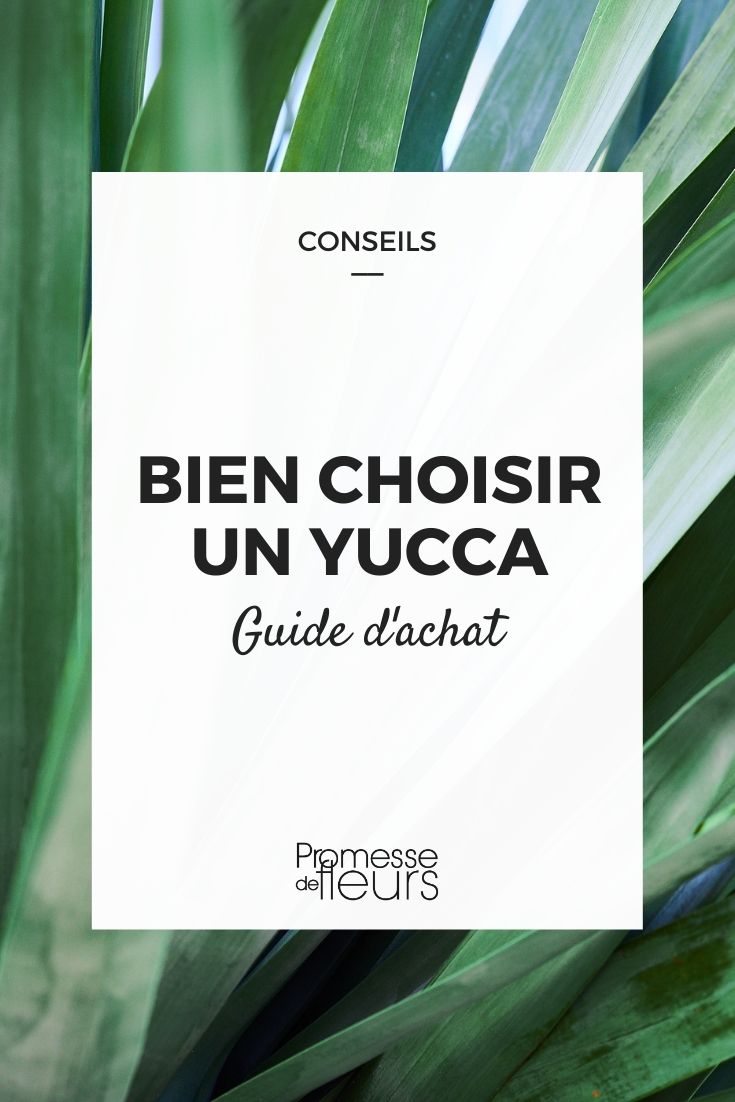































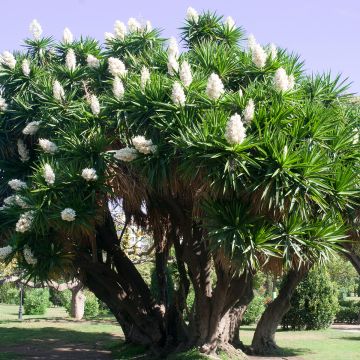
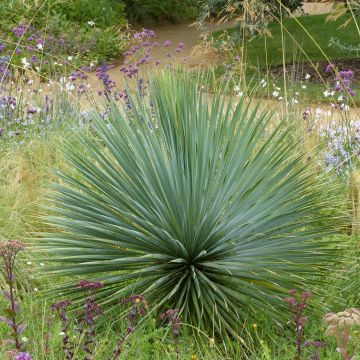
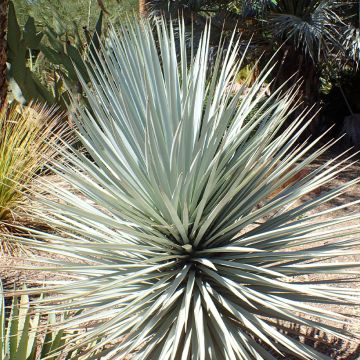
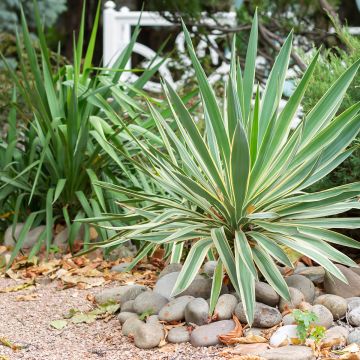
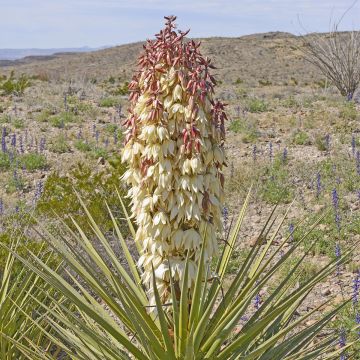
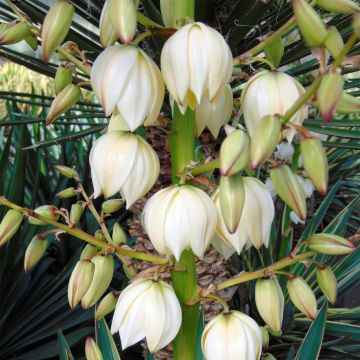
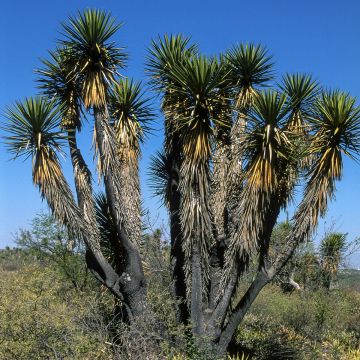
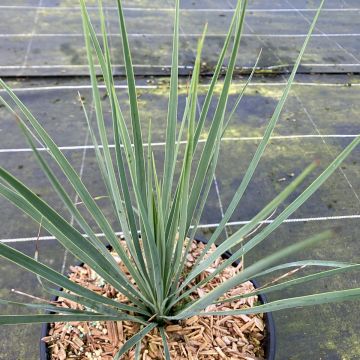
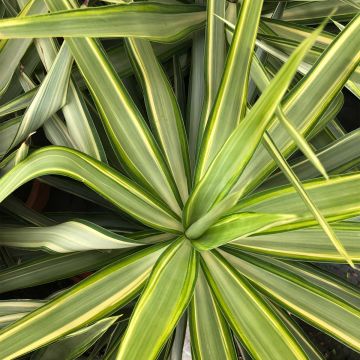
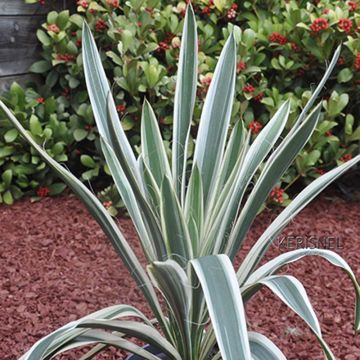
Comments